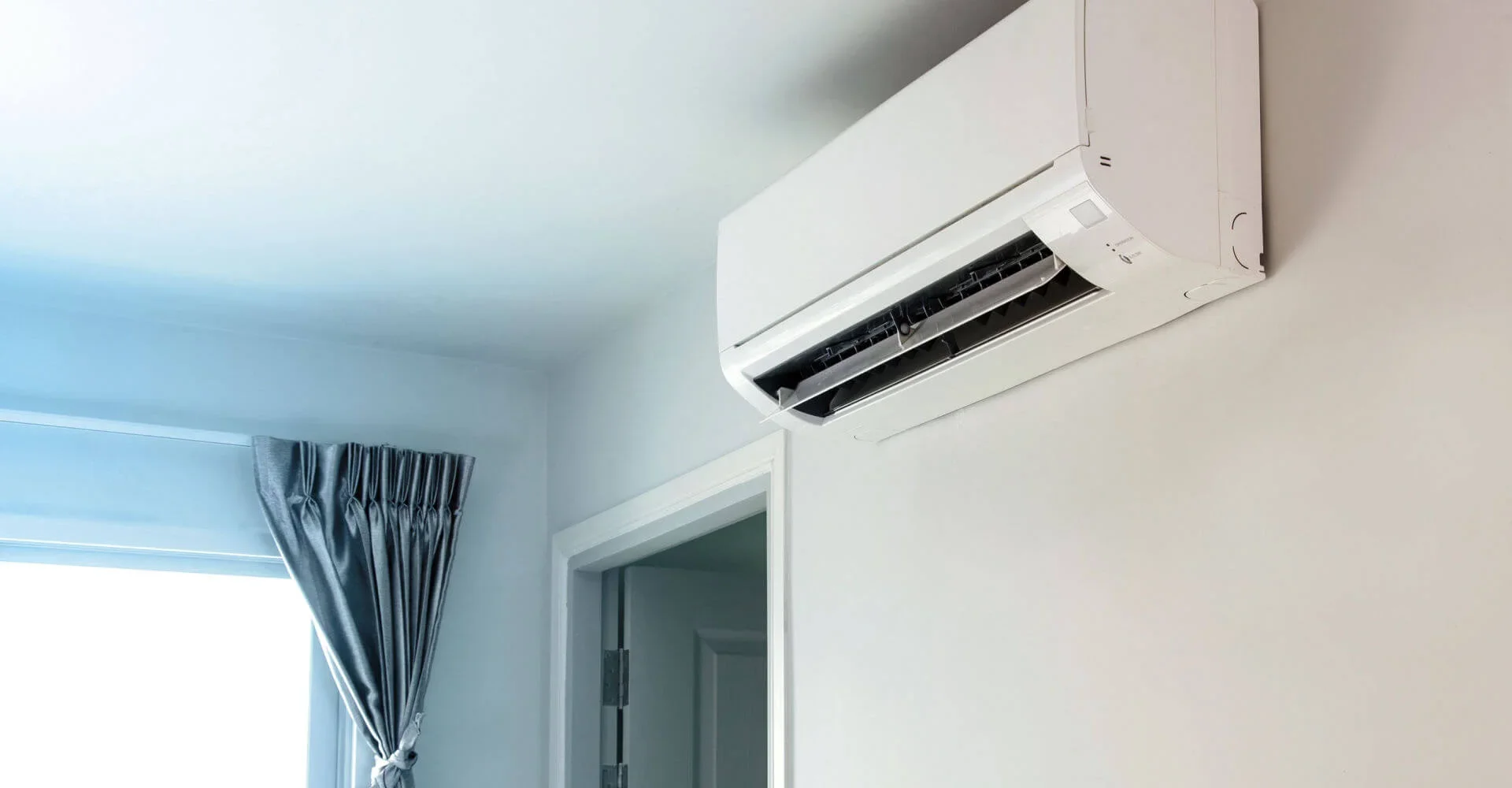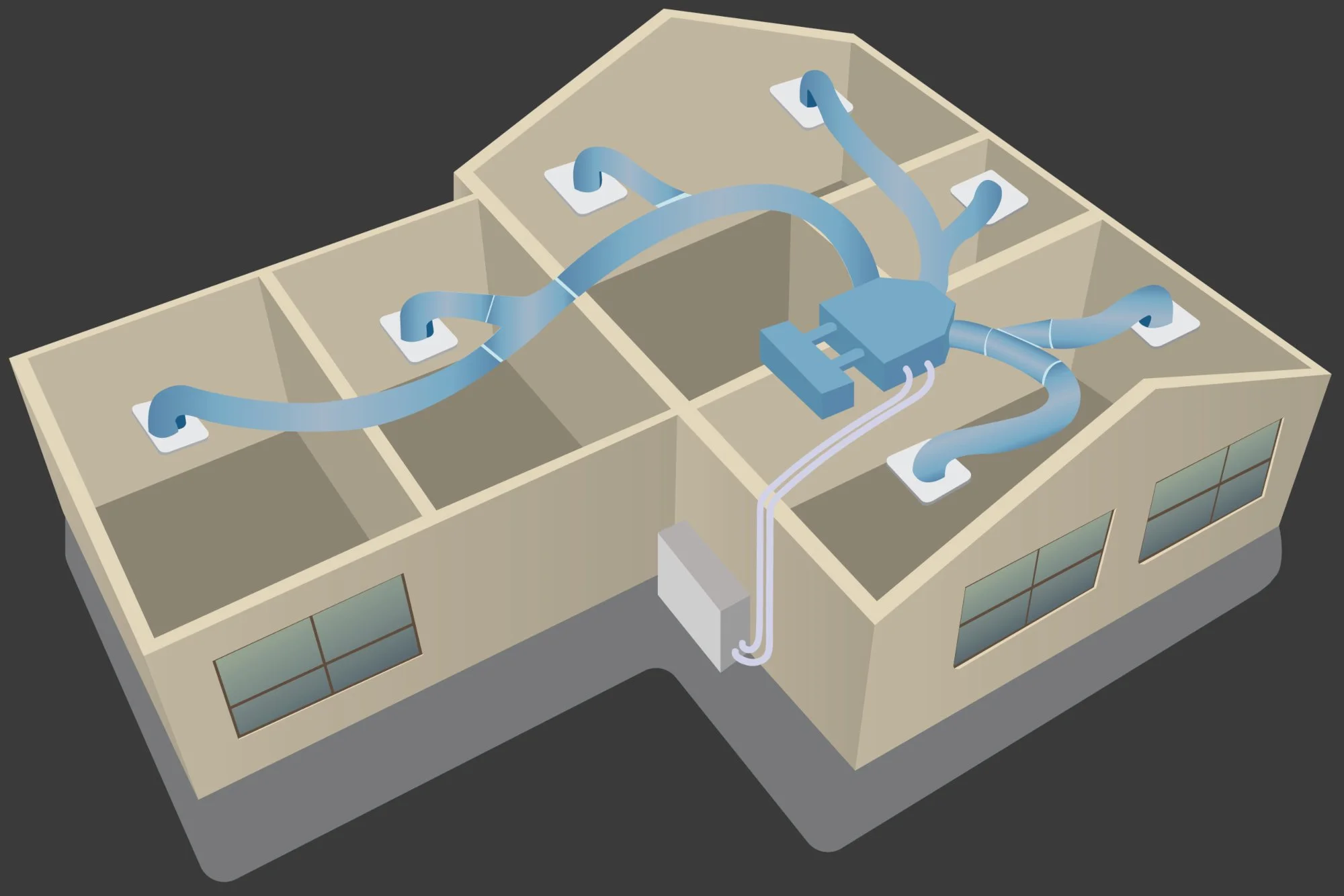Climate Control Systems for Off-Grid Solar Homes
Off-grid living in Australia is about independence — but also about balance. The country’s climate swings between blistering summer heat and crisp winter nights, so maintaining indoor comfort without overwhelming your solar and battery system requires careful planning.
When every kilowatt counts, choosing the right climate control system can make or break your energy strategy. Below, we explore the main options used in off-grid homes: portable air conditioners, split systems, and ducted air conditioning (single and three-phase) — plus a quick look at evaporative coolers as an ultra-efficient side option.
A Frigidaire portable air conditioner (Image: https://www.bhg.com)
1. Portable Air Conditioners
Overview
Portable units are the simplest entry point for cooling. They’re compact, plug into a standard outlet, and vent hot air through a window or duct hose. Ideal for renters, cabins, or occasional use, they offer flexibility but come with the trade-off of efficiency.
Upfront Cost
AUD $400 – $1,000 depending on size and brand.
No installation cost — just plug in and vent the exhaust hose correctly.
Energy Consumption
Draws 0.8 – 1.8 kW per hour, typically 8 – 12 kWh/day with continuous use.
Efficiency is lower than fixed systems because of single-hose heat loss and limited cooling range.
Pros
Affordable and portable.
Great for small rooms or short-term use.
No professional installation required.
Cons
Least efficient of all cooling types.
Can be noisy, with frequent compressor cycling.
Poor sealing around exhaust vents reduces performance.
Verdict: Portable air conditioners suit temporary cooling needs or small, low-use spaces. They’re not practical for full-time off-grid comfort, as even moderate daily use can quickly drain stored battery power.
The internal unit of a Split System Air Conditioner.
2. Split System Air Conditioners
Overview
Split systems remain the most common off-grid cooling and heating solution. A wall-mounted indoor unit connects to an outdoor compressor via refrigerant lines. They’re compact, quiet, and highly efficient — especially inverter-driven models.
Upfront Cost
AUD $1,000 – $3,500 per unit, including installation.
Multi-split configurations (one outdoor compressor powering multiple indoor units) can cost AUD $4,000 – $6,000.
Energy Consumption
0.5 – 2.5 kW per hour, depending on capacity.
Daily use averages 3 – 8 kWh, easily offset during peak solar generation.
Pros
High energy efficiency — great performance from small solar arrays.
Zoning control lets you cool only occupied rooms.
Reverse-cycle operation provides both heating and cooling.
Inverter compressors ramp smoothly, reducing startup surges.
Cons
Multiple units may be required for larger homes.
Running several simultaneously can strain smaller off-grid systems.
Requires periodic cleaning and outdoor clearance.
Verdict: For most off-grid households, split systems deliver the best balance between comfort, cost, and efficiency. When used smartly during sunny hours, they provide year-round temperature control without overloading solar or battery capacity.
A ducted air conditioning system (Image: https://sharpeservices.com.au/)
3. Ducted Air Conditioning (Systems & Three-Phase Variants)
Overview
Ducted air conditioning distributes cooled or heated air throughout an entire home via ceiling or under-floor ducts. Systems can be single-phase for smaller homes or three-phase for high-capacity setups. While efficient at maintaining uniform temperatures, they’re energy-intensive — and often excessive for typical off-grid households.
Upfront Cost
Single-phase: AUD $7,000 – $12,000** installed.
Three-phase: AUD $10,000 – $20,000+** for large homes or commercial-grade inverters.
Additional expense for ductwork, zoning controls, and installation access.
Energy Consumption
3 – 6 kW per hour under moderate load; more for larger homes or multi-zone systems.
Can exceed 30–50 kWh/day, often surpassing an off-grid home’s total solar generation.
Pros
Whole-home comfort with automated temperature control.
Modern systems allow zoning to shut off unused rooms.
Aesthetically clean — no wall units.
Cons
Highest power demand of all cooling types.
Large inrush currents can trip smaller inverters.
Significant maintenance and servicing costs.
Generally impractical unless paired with large solar arrays and battery storage (e.g. 15 kW + systems).
Verdict: Ducted systems (especially three-phase) are rarely justified off-grid unless you have a commercial-scale solar setup or generator backup. For most homeowners, targeted climate control through split systems is far more efficient and affordable.
Side Note: Evaporative Coolers
Evaporative coolers use a fan to draw warm air through wet filter pads, cooling it as the water evaporates.
Energy Use: Only 150 – 400 watts, a fraction of conventional air con.
Best For: Dry inland regions where humidity is low — e.g. Outback, Western NSW, Central QLD.
Limitations: Effectiveness drops sharply in coastal or tropical humidity.
Water Use: Roughly 10 – 20 L per hour; manageable with rainwater tanks.
Verdict: In the right climate, evaporative coolers are the lowest-energy mechanical cooling option available to off-grid households.
Ideal Operational Times & Energy Management
Running any climate control system off-grid requires timing and discipline:
☀️ Run during peak solar hours (10 am – 4 pm): Use AC while panels are producing maximum power to minimise battery draw.
🌇 Pre-cool in the afternoon: Lower indoor temperatures before sunset so the house stays comfortable through the evening.
🌙 Avoid overnight operation: Batteries should prioritise essential loads (lighting, fridge, pumps). Instead, rely on ceiling or pedestal fans.
🕒 Smart zoning and timers: Automate cooling only for occupied rooms to save energy.
Keeping Your Off-Grid Home Stable
Insulate Well: Good roof, wall, and under-floor insulation reduces reliance on active cooling or heating.
Seal Gaps: Prevent conditioned air from leaking through doors or windows.
Ceiling Fans: At 40–75 W, they extend comfort before air con is needed.
Cross-Ventilation: Use openable windows or vents to flush out heat at night.
Window Treatments: Install reflective blinds, external shading, or tinting to limit solar gain.
Thermal Mass: Concrete or stone floors absorb heat during the day and release it gradually.
Orientation & Shade: Design or retrofit your home to block harsh western sun and allow winter warmth.
Final Thoughts
Climate control in an off-grid solar home is all about matching technology to lifestyle.
Portable units are quick, cheap fixes for small spaces but power-hungry in the long run.
Split systems are the practical sweet spot — efficient, affordable, and perfect for solar-powered households.
Ducted systems (particularly three-phase) deliver ultimate comfort but demand industrial-level energy capacity.
Evaporative coolers, in the right dry climate, provide whisper-low energy cooling that complements off-grid simplicity.
By choosing the right system and pairing it with smart operation, insulation, and passive design, you can keep your off-grid home cool in summer and warm in winter — without breaking your energy budget.



